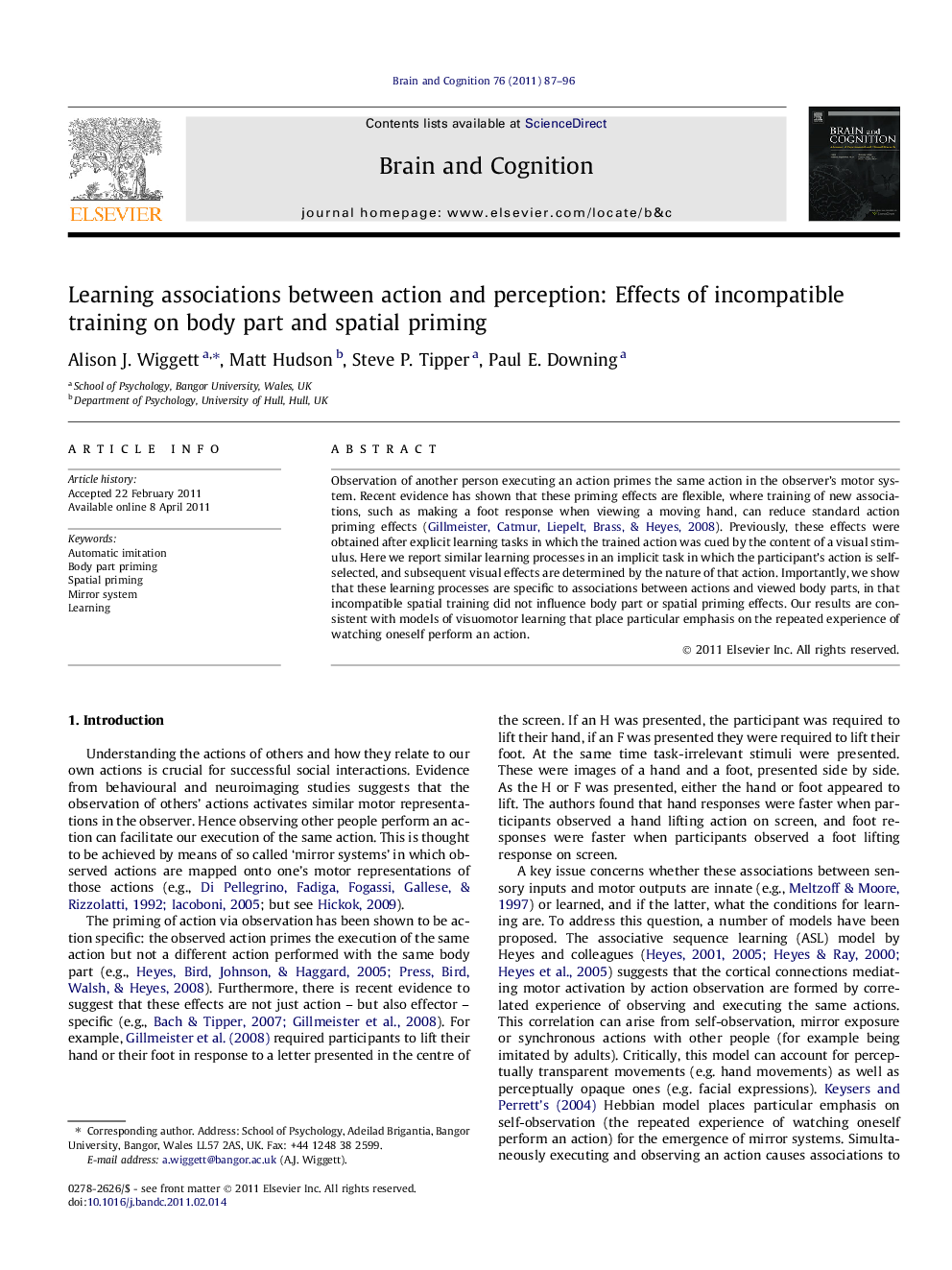| Article ID | Journal | Published Year | Pages | File Type |
|---|---|---|---|---|
| 924223 | Brain and Cognition | 2011 | 10 Pages |
Observation of another person executing an action primes the same action in the observer’s motor system. Recent evidence has shown that these priming effects are flexible, where training of new associations, such as making a foot response when viewing a moving hand, can reduce standard action priming effects (Gillmeister, Catmur, Liepelt, Brass, & Heyes, 2008). Previously, these effects were obtained after explicit learning tasks in which the trained action was cued by the content of a visual stimulus. Here we report similar learning processes in an implicit task in which the participant’s action is self-selected, and subsequent visual effects are determined by the nature of that action. Importantly, we show that these learning processes are specific to associations between actions and viewed body parts, in that incompatible spatial training did not influence body part or spatial priming effects. Our results are consistent with models of visuomotor learning that place particular emphasis on the repeated experience of watching oneself perform an action.
► We measured body part and spatial priming effects before and after a training phase. ► Associations between actions and visual effects were implicitly learned. ► Incompatible body part training significantly reduced the size of body part priming. ► Incompatible spatial training did not influence body part or spatial priming effects. ► Associations between executing and observing body actions constitute special links.
